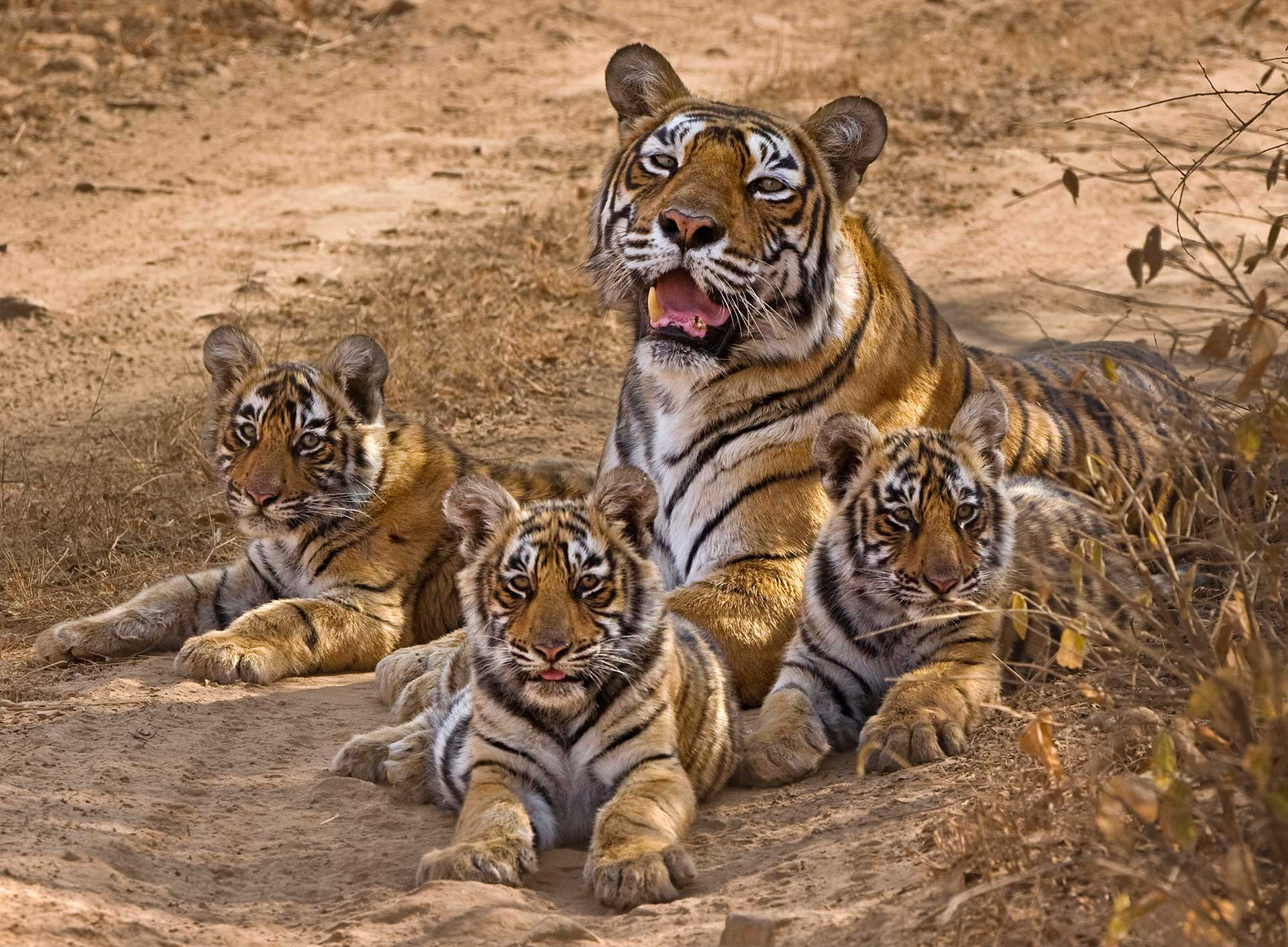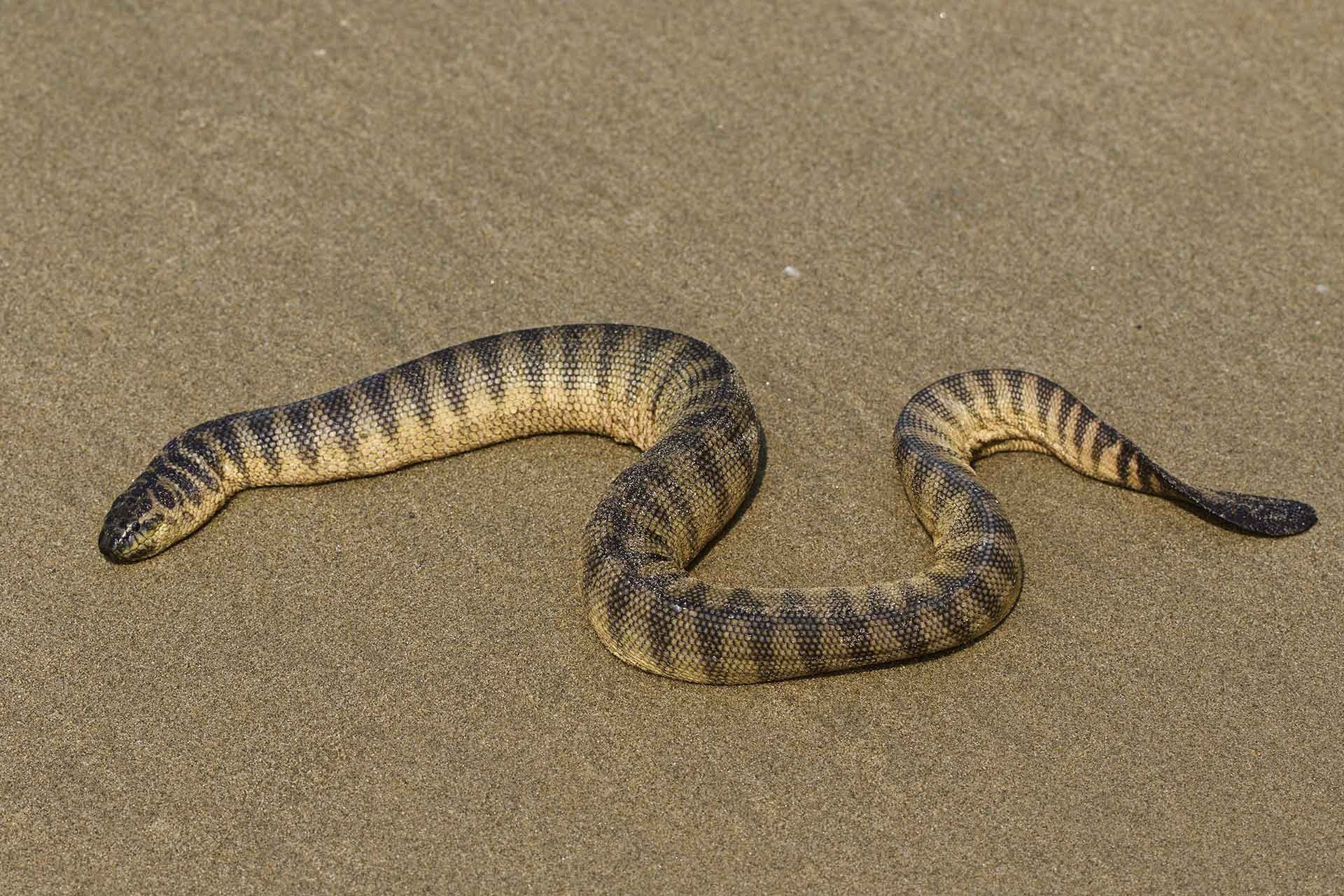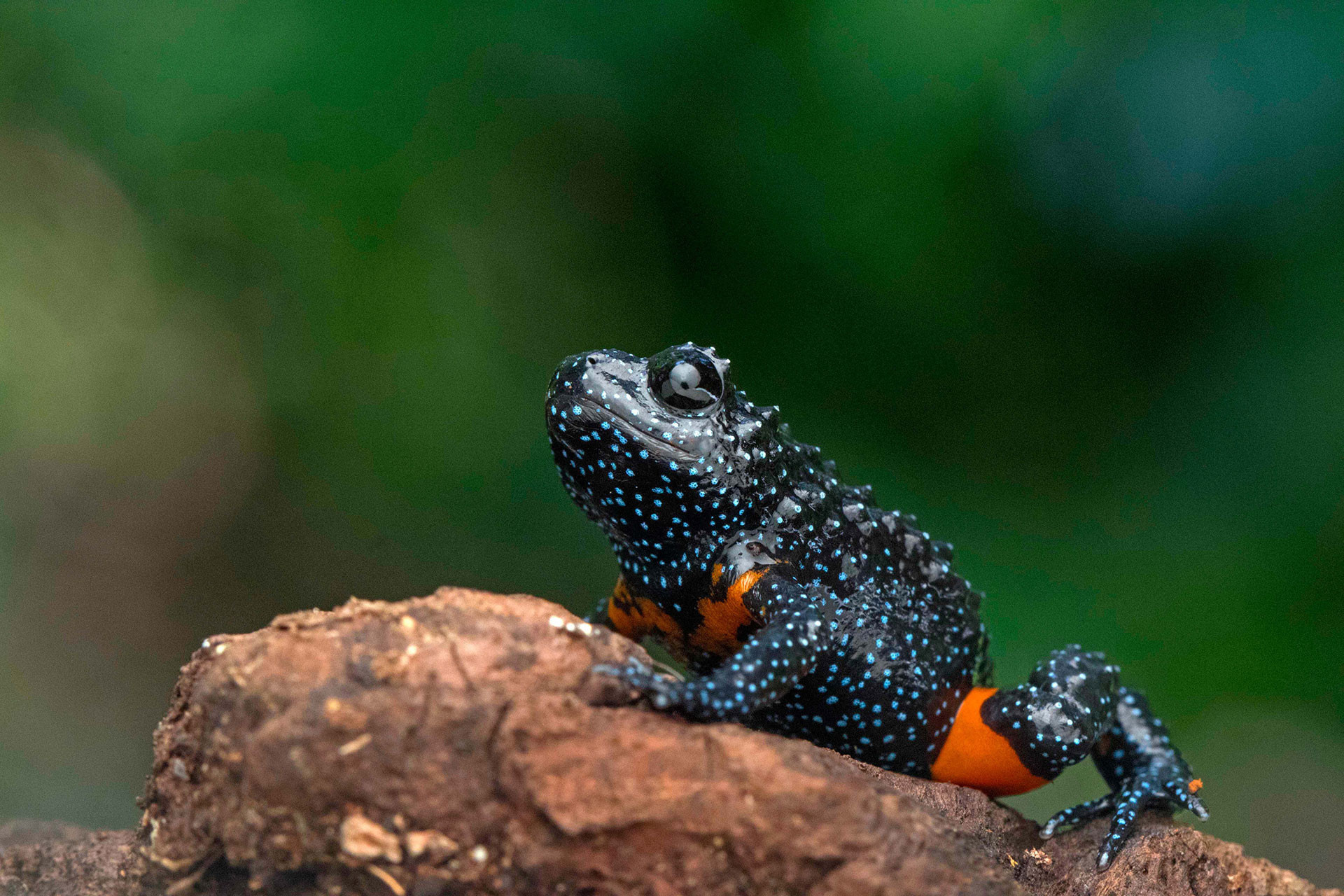Another trip around the sun, and here we are!
Team Nature inFocus is usually not big on resolutions, but we do stick by one every year—to try and give you the best of insights and interesting anecdotes from the natural world. After perusing through the stories published in 2022, we can confidently say that we have ticked this one crucial task on our list.
From celebrating the iconic species of every state and union territory, and the iconic tigers from parks across the nation, to shining the light on the elusive sea snakes and the hidden life within our soil—our stories revealed curious sides of the biodiversity around us. We examined pertinent issues like the Mekedatu Project, disappearing lateritic landscapes, the not-so-green aspects of planting exotic species on our shores, and why snakebites continue to be one of the country's biggest human-wildlife conflict issues. Along the way, we took you to the bizarre world of the zombie fungi, drenched you in the monsoons of the Western Ghats, walked along with you into the wilderness of Pakke Tiger Reserve and stopped for an illuminating conversation with a marine biologist. Phew, it's been a busy year!
So without further ado, here are the best stories that made us think a little bit more about the Indian wilderness and its denizens. See you in 2023!
The Iconic Tigers Of India
Team Nature inFocus
As a wildlife enthusiast, there are certain moments that you will never forget. The first time you set foot into the wilderness, your first wildlife photograph or the time you witnessed a unique natural history moment. High up on this list is the first time you set your eyes on a tiger. The stripes, the stealth and the captivating eyes—no matter how many times you see or photograph a tiger, it is impossible to subdue the awe that its presence draws...What makes these tigers unique? Why are some more memorable than others? This International Tiger Day, we pose these questions to wildlife photographers, filmmakers, biologists, conservationists and naturalists, asking them to share stories about some of their favourite tigers. These stories reveal an underlying passion for the wilderness and for the striped cats. But beyond that, they reveal how mesmerising these big cats are. Hop on, as this is going to be a truly wild safari.
Snakes On A Boat
Chetan Rao & Muralidharan M
The boat shook as a heap of fish—weighing well over a ton—landed on the deck. It was the summer of 2016, and the trawler was dredging along the Sindhudurg coast, with its bounty glistening in the morning sun. From mantis shrimps, prawns and crabs to rays and an array of fishes, trawlers would make a good site for a marine biodiversity class, so great was the variety of marine life on display. In reality, trawlers create far more dire situations for the ocean, its denizens and the fishermen whose lives depend on it. Most times, close to 80 per cent of the catch is not used for consumption. Instead, this extra ‘trash’ fish is converted into poultry feed or as fertiliser for aquaculture.
Lateritic Landscapes Are Not Wastelands
Prashantha Krishna M C
On January 14, 2021, I visited Kaikamba, a small town near Mangalore, Karnataka, in search of the elusive Green Imperial-Pigeon. I was not aware of the habitat I was visiting nor the kind of birds I would see there. As I kept walking, keeping an eye out for large pigeons with metallic green plumage on their wings, back and tail, to my amazement, I came upon a lateritic hillock with grass patches and small bushes all over. The place reminded me of my home at the base of Posadi Gumpe, a lateritic hillock in the Kasaragod district of Kerala. Lateritic habitats are unique and are mainly seen along the southern coast of India, although small patches or similar rock formations can also be seen elsewhere. According to geologists, laterite is hardened soil with a high concentration of iron oxide. From ancient times, laterite has been used as building blocks in construction, hence the term laterite, which means ‘brick’ in Latin. The term was coined by British physician Francis Buchanan-Hamilton in 1807. Lateritic landscapes undergo dramatic changes before and after the rains. During the monsoon season, grass and other flowering plants sprout to form green beds across the laterite plateau, and once the rain stops and summer arrives, life here becomes sparse to the eye.
Cauvery Wildlife Sanctuary And The Controversial Mekedatu Project
Mansi Anil Kumar
Since the earliest of times, through the most ancient civilisations, rivers have always been lifelines to humankind. Both revered and feared at times, all cultures and religions have accorded rivers significance. River Cauvery is no exception. Passions run high in the southern states of India when the subject of debate is the river. Though venerated at its source at the Talakaveri in the Brahmagiri Hills, River Cauvery has been heavily exploited throughout its running length, except for perhaps the 100-odd kilometres that flows through the Cauvery Wildlife Sanctuary (WLS). Or so we thought until the proposal for the Mekedatu Project.
The Monsoon Stars Of The Western Ghats
Surya Ramachandran & David Raju
As professional wildlife guides and expedition leaders, the monsoon season is the only time of the year when we get to explore on our own. And, what better patch of wilderness to explore than the Western Ghats? One of the top ten biodiversity hotspots on the planet, the Western Ghats supports a wide array of species and genera that are found nowhere else in the world. We have been exploring various pockets of this hill forest for over ten years now, something that began when we were lodge naturalists in Central India. During the off-season, we returned to our respective homes in the south and used the holidays to expand our understanding and seek some of our target species in the Ghats.
Iconic Species From Every State & Union Territory Of India
Team Nature inFocus
On a piece of paper, write down the number of animal species from India that you can name. How many did you get? 20? 30? A few more? India is home to 7-8 per cent of all the documented species in the world! Although it would be difficult to get an exact count, it is estimated that our country houses about 91,000 faunal species and 45,000 floral species! Which makes the numbers on our list about 0.00000...well, let's not get into the math and call it a meagre account of all that is around us. We can never really learn about them all, but we can pay attention to the ones we know and try to understand their roles across the various ecosystems found within our megadiverse nation. In this list of iconic species from every state and union territory in the country, we introduce you to some well-known, some lesser-known, some unknown, some new and some old—each unique and representative of their respective regions. Of course, by no means is this an exact or exhaustive list. We hope you can add to this and share your knowledge about some of the animals and plants that are unique to your state. Time to take a trip across the country. Buckle up!
The Mysterious Ways Of The Zombie Fungi
Jithesh Pai
As a kid, monsoon was the most exciting season for me! The fresh smell of rain and the immediate transformation of one’s surroundings from arid brown to lush green was a welcome change from the dry heat of the summer. But the real reason behind my excitement was the chance to accompany my mom to the backyard forest to harvest the season’s puffballs and mushrooms which she would later cook into a flavour-packed curry! I once went overboard and picked a few mushrooms by myself to proudly hand them over to mom, only to be politely rejected as she educated me about poisonous fungi and how they can bitterly upset your digestion. But, would you believe me if I told you that apart from poisonous fungi, there are also fungi that can completely take over a small arthropod’s central nervous system and assume absolute control over it? Unbelievable, right? Imagine what it felt like for me as a kid, reading about entomopathogenic fungi aka ‘zombie fungi’ in one of the science books at the school library!
You may also like to read
Why Is India The Snakebite Capital Of The World?
Sumanth Bindumadhav
Human-wildlife conflict is one of the most hotly debated topics among conservationists, policymakers, wildlife managers and animal welfare activists. It draws strong opinions ranging from policy change to on-ground practices that seek to mitigate conflict. Unfortunately, the voice that needs to be the loudest—that of the community living alongside these wild animals, is often side-lined, silenced, or misrepresented. This is most evident in India’s biggest human-wildlife conflict issue—snakebites. India has the unfortunate reputation of being the snakebite capital of the world. It is a tag that has been synonymous with the country ever since the first nationally representative Million Death Study, published in 2011. The study confirmed what many conservationists feared, snakebite was a burgeoning problem in the country, with nearly 50,000 deaths from one million bites every year.
Shadowing An STPF Officer In Pakke Tiger Reserve
Upayan Chatterjee
The orange sun of daybreak had just presented itself at the horizon, and the damp air carried a beautiful smell of moist earth, soaked in the characteristically profuse morning dew of Northeast India's humid tropical forests. It was just another customary winter morning at Pakke Tiger Reserve, but it had me wide-eyed and curious. My senses were overwhelmed from trying to take in more than they could register. Tana Takkar, an STPF (Special Tiger Protection Force) Officer, was to accompany me through the forest while ensuring as much safety as possible. Tana ji was familiar with every pulse of the forest, from patrolling 200km on foot every month, for more than a decade. His calm nature was infectious—a steady walking rhythm set in soon, and my senses transitioned from frenzied hyperactivity to a state of calming awareness.
Shreya Yadav On Her Journey Into The Curious World Of Corals And Atolls
Sharmila Vaidyanathan
...on World Oceans Day, we thought we would also share some hope besides the doom and gloom. Hope that stems from the fact that people are working relentlessly to protect the oceans. Hope kindled by the numerous young minds that have made it their mission to explore and understand the underwater world. Hope that arises from the promise that with collective action, we can see change. And to instil that hope in all of us, we asked young researcher Shreya Yadav to share her thoughts on some critical ocean-related issues. Yadav is a marine biologist who is currently pursuing her PhD at the University of Hawaii in Manoa. She is close to the finish line as she is presently preparing to defend her dissertation on 'Investigating historical, social and ecological dimensions of coral reef resilience’.
The Essential Science Of Soil Biodiversity
Sharmila Vaidyanathan
On a blazing hot summer morning in Denkanikottai, Tamil Nadu, the Bhoomi Farmers team gathered in their conference room. A group of agricultural science graduates with varying backgrounds like entomology, microbiology and agronomy faced a whiteboard as Shankar Venkataraman, Founder of Bhoomi and passionate agriculturist, began the day’s discussion. On the board, he wrote—'It all starts with how you manage soil.' Over the next hour, Venkataraman spoke about the importance of soil health and how we have become disconnected from this vital resource. But the main protagonists of his narrative were the squiggly lines and circles he drew to depict the life within the soil, a.k.a. soil biodiversity.
Casuarina: Cure Or Cause For Concern?
Furkan Latif Khan
Santosh Padhi, 31, lives on the east coast of India, along the Bay of Bengal. He remembers a time in his childhood when a visit to the beach meant a whole day’s trip. Back then, the sea was about two kilometres from his home in Tandahara village, in the state of Odisha. Today, it is a mere 200 metres away. “The sea has been eating away at the sand and is moving closer everyday,” says Padhi as he walks to the beach. The incoming sea has already submerged the agricultural lands of many families in the village, including Padhi’s. “In our village, almost 20-30 households have lost their land to the sea. I have documents of my farmland, but it is inside the sea,” Padhi explains, while chuckling at the absurdity of an underwater farm.















